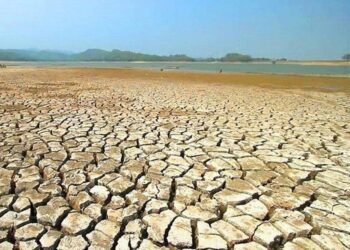Tehran: Black‑clad mourners packed Tehran’s streets on Saturday as Iran honoured dozens of senior commanders, nuclear scientists, and civilians killed during the 15‑day aerial conflict with Israel.
A convoy of flag‑draped coffins rolled into Azadi Square, each bearing portraits of the dead. State television counted 60 coffins—among them 16 nuclear scientists, 10 senior military chiefs, four women, and four children. Photographs showed rows of ballistic missiles displayed alongside the caskets.
Fallen Commanders and Scientists
Among the most prominent dead were:
- Maj. Gen. Mohammad Bagheri, Chief of Iran’s Armed Forces
- Gen. Hossein Salami, Commander of the Islamic Revolutionary Guard Corps (IRGC)
- Gen. Amir Ali Hajizadeh, head of the IRGC’s Aerospace Force
All three were killed on June 13, the opening day of Israel’s strikes on Iranian nuclear facilities. Bagheri’s burial took place later in the afternoon at Behesht Zahra cemetery, south of the capital; Salami and Hajizadeh will be laid to rest on Sunday.
Leaders in Attendance
President Masoud Pezeshkian, top officials, and wounded Supreme Leader adviser Ali Shamkhani stood alongside Ayatollah Ali Khamenei’s son Mojtaba as crowds tossed rose petals onto the coffins.
Foreign Minister Abbas Araqchi hailed what he called Iran’s “heroic resistance against two nuclear‑armed regimes,” writing on Telegram that the nation emerged “prouder, more dignified, and more resolute than ever.”
Ayatollah Khamenei, who usually leads final prayers for fallen commanders, has not appeared in public since the conflict began; state media gave no reason for his absence.
The War at a Glance
- June 13: Israel launches surprise air campaign on Iranian nuclear sites.
- June 22: The United States joins with strikes on additional facilities.
- June 25: A cease‑fire halts hostilities after massive missile exchanges.
Iran’s health ministry lists 610 dead and 4,700 wounded, while activist outlet HRANA claims 974 fatalities, 387 of them civilians. Israel reports 28 dead and 3,238 wounded.
Israel says its objective was to prevent Tehran from gaining a nuclear arsenal; Iran insists its nuclear programme is peaceful, echoing the UN watchdog’s view that there is “no credible indication” of an active weapons effort.
Tense Aftermath
U.S. President Donald Trump warned Friday he “would not hesitate” to strike Iran again, prompting Khamenei to threaten retaliatory attacks on U.S. bases across the Middle East.
While an Israeli defence official called the campaign a “major blow” to Iran’s nuclear ambitions, Iran’s Revolutionary Guards countered Saturday that both Washington and Tel Aviv “failed to achieve their stated objectives.”
As prayers ended in Azadi Square, mourners dispersed with a mixture of grief and defiance—vowing, in the words of one banner, that “the martyrs of power will be avenged.”
–With Input From WNN Desk, Tehran





















